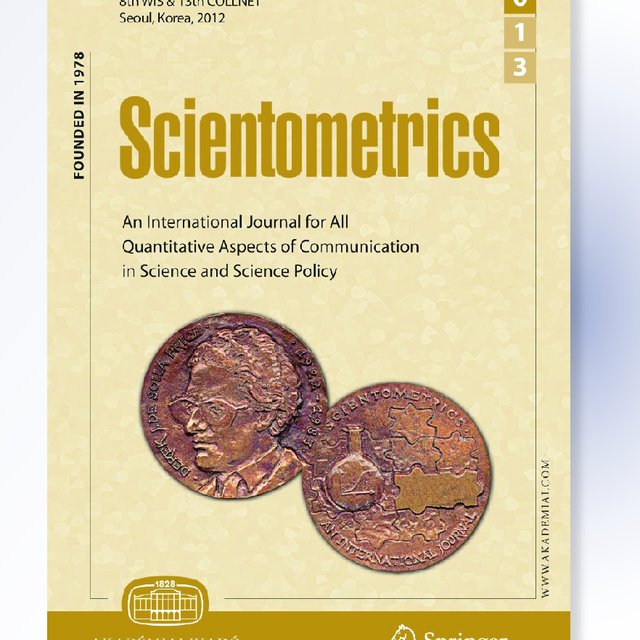New article of Juan Gorraiz, Ursula Ulrych, Wolfgang Glänzel, Wenceslao Arroyo-Machado & Daniel Torres-Salinas
Scientometrics is concerned with the quantitative features and characteristics of science and scientific research. Emphasis is placed on investigations in which the development and mechanism of science are studied by statistical mathematical methods.

An International Journal for all Quantitative Aspects of the Science of Science, Communication in Science and Science Policy
The aim of this study is to analyze to which extent the Journal Impact Factor (JIF) reflects the amount of excellent publications contained in a journal in the corresponding subject category. We are introducing two percentile-based indicators in order to measure the excellence contribution at journal level. Calculations of these indicators have been carried out for twenty different Journal Citation Reports (JCR) subject categories to investigate the correlation with Garfield’s Journal Impact Factor. Differences in the ranking according to all three indicators especially in First Quartile (Q1) of each category are shown and discussed. We have also studied the effect of multidisciplinary journals to the excellence contribution at category level and observed considerable differences between the twenty considered categories under analysis. Their omission would lead to neglect a large part of excellent publications, especially in the hard sciences. The introduced excellence indicators are very robust considering the types of documents considered for their calculation. The results of this study show that the journal excellence content is not completely reflected in the JIF measure and affects both Science and Social Science Edition categories. Therefore, the introduction of journal excellence indicators will help to give a more complete picture of the citation impact of a journal, because they are informing directly about the total and normalized excellence contribution of each journal to the corresponding subject category. They are a valuable enrichment and complement of the JIF, and more suitable than the Journal Citation Indicator, recently added to the JCR, because they reflect the inherent skewness of the citation distribution.
